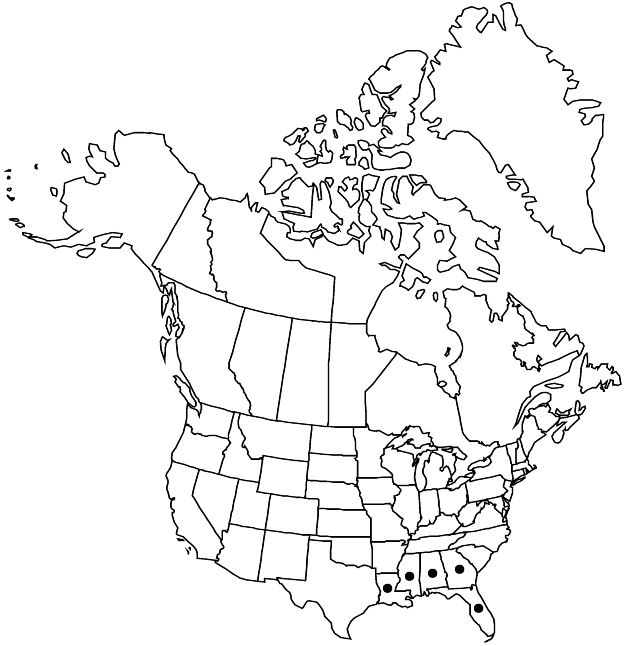Hypericum brachyphyllum
Nomencl. Bot. ed. 2, 1: 787. 1840.
Shrubs, erect, forming round bush, 3–15 dm, bark smooth, not metallic-silvery. Stems: internodes sometimes 4-lined at first, soon 2-winged, not terete. Leaf-blades linear, 6–12 × 0.5–0.7 mm, base articulated deciduous with leaf, cf. 8. H. tenuifolium, parallel, margins revolute, apex rounded-apiculate, midrib unbranched. Inflorescences ± narrowly cylindric, 3–15-flowered, with 3–5-flowered dichasia or flowering branches from to 10 proximal nodes. Flowers 10–13 mm diam.; sepals deciduous, not enclosing capsule, 5, linear, unequal, 2.5–4.5 × 0.5–1 mm; petals 5, bright-yellow, obovate-spatulate, 5–8 mm; stamens deciduous, 40–45; ovary 3-merous; styles longer than ovaries. Capsules narrowly cylindric to narrowly ovoid-conic, 3.5–5 × 1.5–2 mm. Seeds not carinate, 0.4–0.6 mm; testa finely reticulate. 2n = 18.
Phenology: Flowering summer (Jul–Aug).
Habitat: Moist habitats, pine flatwoods, pond margins, borrow pits, swamp woodland, lowland coastal plain
Elevation: 0–100 m
Distribution

Ala., Fla., Ga., La., Miss.
Discussion
Hypericum brachyphyllum is bushier than H. nitidum subsp. exile, with relatively small flowers, capsules, and, usually, leaves, and shorter styles. The bushy habit, two-sided shoots, and glossy leaves without prominent base or apical hydathode, as well as the wet habitats, all distinguish it from H. tenuifolium.
Selected References
None.
Lower Taxa
"dm" is not declared as a valid unit of measurement for this property.